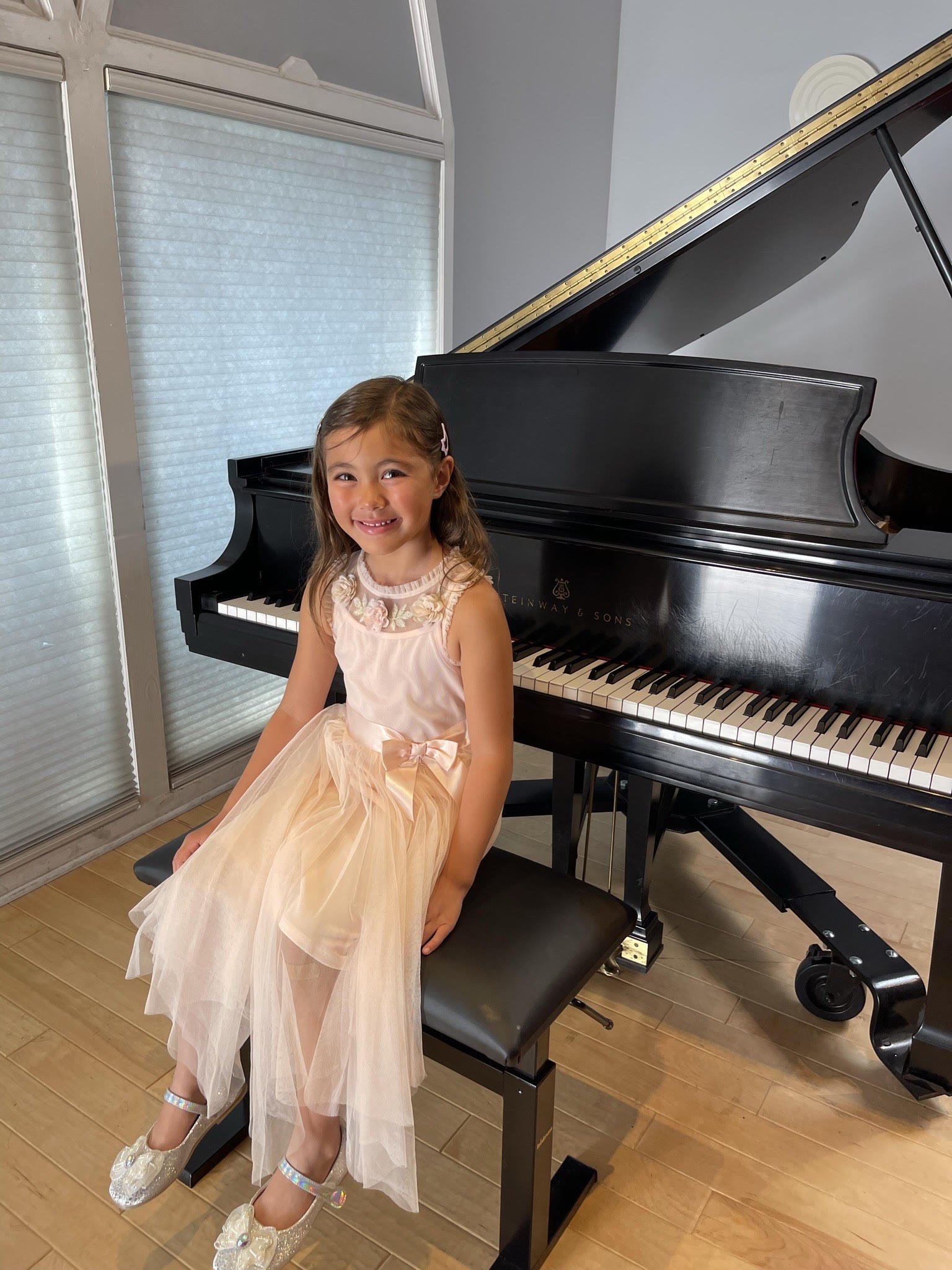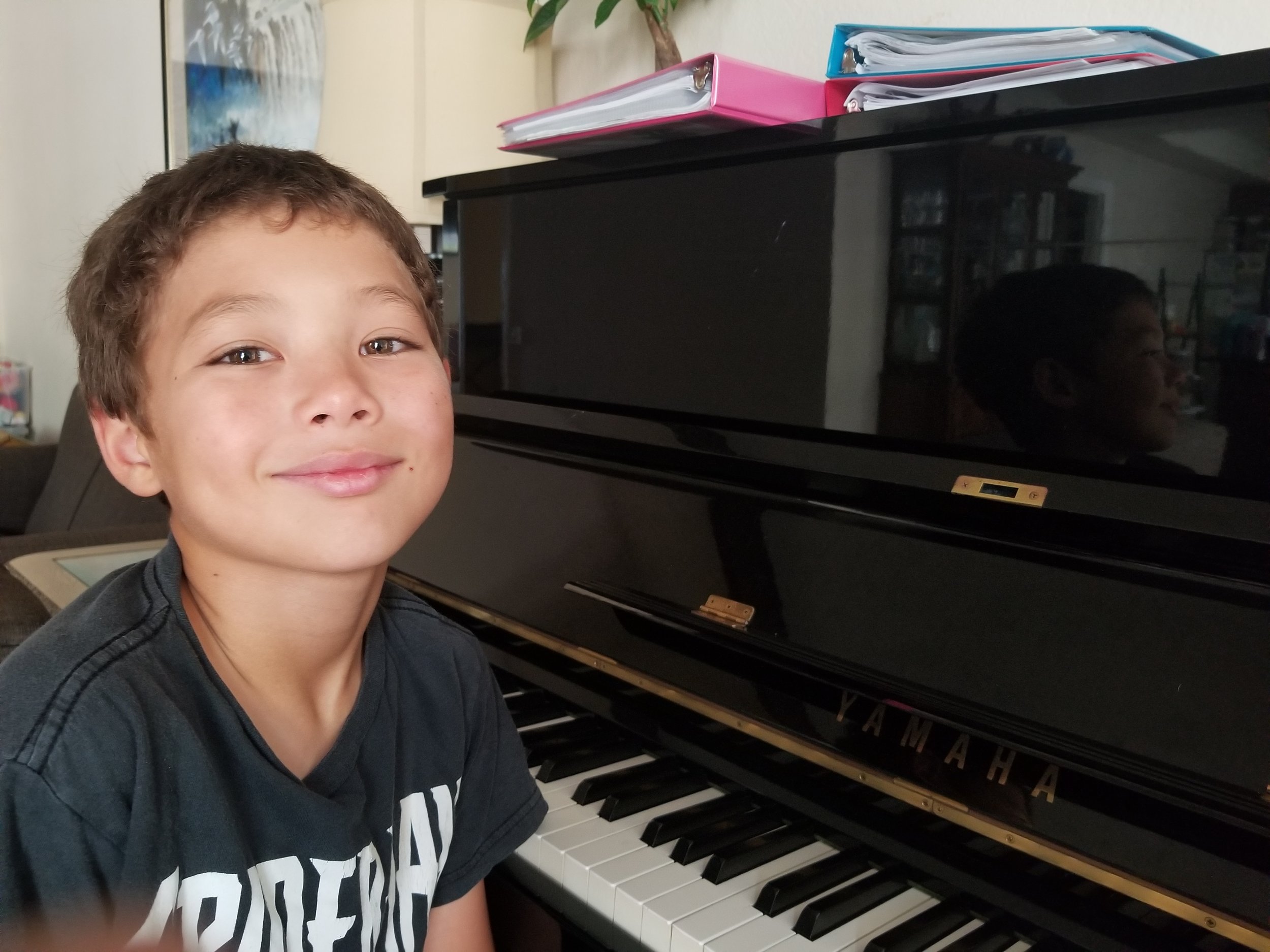
Solo Recitals
Preparing, Producing, Performing, and Preserving a Solo Recital for Family & Friends
Solo Recitals
Preparing, Producing, Performing, and Preserving a Solo Recital for Family & Friends
Instructions & Suggestions
Solo / Small Group Recital for Family & Friends!
The goal is to perform a solo or small group recital (either by yourself or with a sibling or a friend) for family and friends. The recital can be in your home or any place you wish, and the audience can be any size and include any number of people (and pets)!
Suggestion: Consider recording your recital.
Here are the steps from planning, to preparing, to producing, to performing, and to preserving:
1. Select your songs and pieces. Choose your favorites and the ones you play best. Ten is a good goal, but it can be less or more as you wish. (Consider playing all music from memory, but use sheet music or music books when you need to.) If you will talk about any of your repertoire, or give any speeches, be sure to write a script and practice it so you know what you are going to say!
2. Create a recital program. Be creative. Invent a name for the recital (it can be as simple as “My Recital” or something else you choose). Then list the songs and pieces in the order you will perform them. Maybe put “The End” or something similar at the bottom, if you like. Add the composer’s name and their dates if known and possible (this is optional but recommended) next to the songs and pieces. Put the date, time, and location of the recital on the program. Decorate the program!
You can display the program on a stand where everyone can see it (larger size) or pass one around for everyone to look at before the performance begins (smaller size). You can also make multiple copies (optional).
3. Create invitations and send the invitations to your desired audience in advance. Be creative and be sure to include all the information (date, time, location, etc.)! You can make physical invitations or send them electronically online.
4. Choose your clothing. Dress up! Costumes are sometimes appropriate and fun. Dress in a way that will look great for your audience and also on video if you record your performance.
5. Set the stage (where the performer performs) and the house (where the audience gathers and sits). Consider comfort, access, lighting, sound, potential noise and other disturbances, and decorations. Will you serve any snacks, food, or drinks?
6. Will you welcome guests as they arrive, or remain “backstage” until the recital begins? If you remain backstage, be sure to have someone who will help with the audience and greet people, etc.
7. Perform your recital! Some performance practices to consider:
How you will enter the stage and sit at the piano or prepare yourself and your instrument to perform.
How you place your hands (for example, in your lap or at your side) after each song or piece. (Don’t rush through, and, take a breath between each number! Setting your hands in your lap for a moment after each piece is a great idea.)
When you will bow and acknowledge the audience. (Definitely bow at the end, and sometimes in between, as appropriate. A head nod toward the audience might be appropriate at certain times in certain situations. It’s your choice!)
How you will exit the stage. (If you are performing with another person, how you will take turns, enter and exit the stage, etc.)
Will someone be recording the performance? Taking pictures? Be sure to work this out in advance.
8. Spend some time with members of the audience after the show (mingle). Be sure to tell everyone how much you appreciate them attending!
9. Clean up (as needed) and put everything away. Stay neat and organized! Also, add the invitation, program, photos, and other artifacts to your memorabilia or scrapbook!
10. Watch the recording (if you made one). You can learn a lot of things by watching your performances!
We hope you have a wonderful, fun, and rewarding experience, with lots of good memories! Best wishes from all of us at Dennis Frayne Music Studios, the Laguna Niguel School of Music, and the Lake Forest School of Music!

